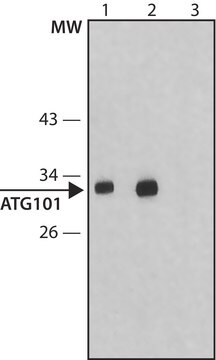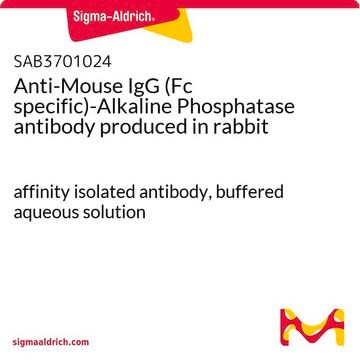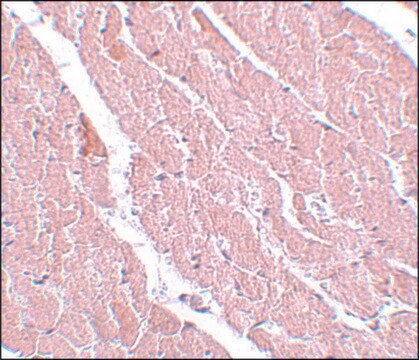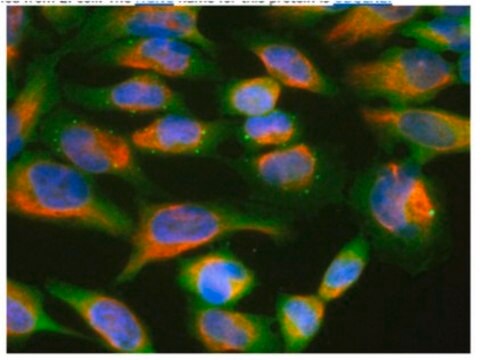おすすめの製品
由来生物
rabbit
結合体
unconjugated
抗体製品の状態
affinity isolated antibody
抗体製品タイプ
primary antibodies
クローン
polyclonal
形状
buffered aqueous solution
分子量
antigen ~65 kDa
化学種の反応性
human, rat, mouse
濃度
~1.0 mg/mL
テクニック
western blot: 1-2 μg/mL using whole extracts of human HeLa cells and 0.5-1 μg/mL using whole extracts of mouse 3T3 or rat PC12 cells.
輸送温度
dry ice
保管温度
−20°C
ターゲットの翻訳後修飾
unmodified
遺伝子情報
human ... KIAA0652(9776)
詳細
特異性
アプリケーション
生物化学的/生理学的作用
物理的形状
保管および安定性
免責事項
Not finding the right product?
Try our 製品選択ツール.
保管分類コード
12 - Non Combustible Liquids
WGK
nwg
引火点(°F)
Not applicable
引火点(℃)
Not applicable
適用法令
試験研究用途を考慮した関連法令を主に挙げております。化学物質以外については、一部の情報のみ提供しています。 製品を安全かつ合法的に使用することは、使用者の義務です。最新情報により修正される場合があります。WEBの反映には時間を要することがあるため、適宜SDSをご参照ください。
Jan Code
SAB4200100-VAR:
SAB4200100-200UL:
SAB4200100-BULK:
SAB4200100-25UL:
試験成績書(COA)
製品のロット番号・バッチ番号を入力して、試験成績書(COA) を検索できます。ロット番号・バッチ番号は、製品ラベルに「Lot」または「Batch」に続いて記載されています。
ライフサイエンス、有機合成、材料科学、クロマトグラフィー、分析など、あらゆる分野の研究に経験のあるメンバーがおります。.
製品に関するお問い合わせはこちら(テクニカルサービス)







